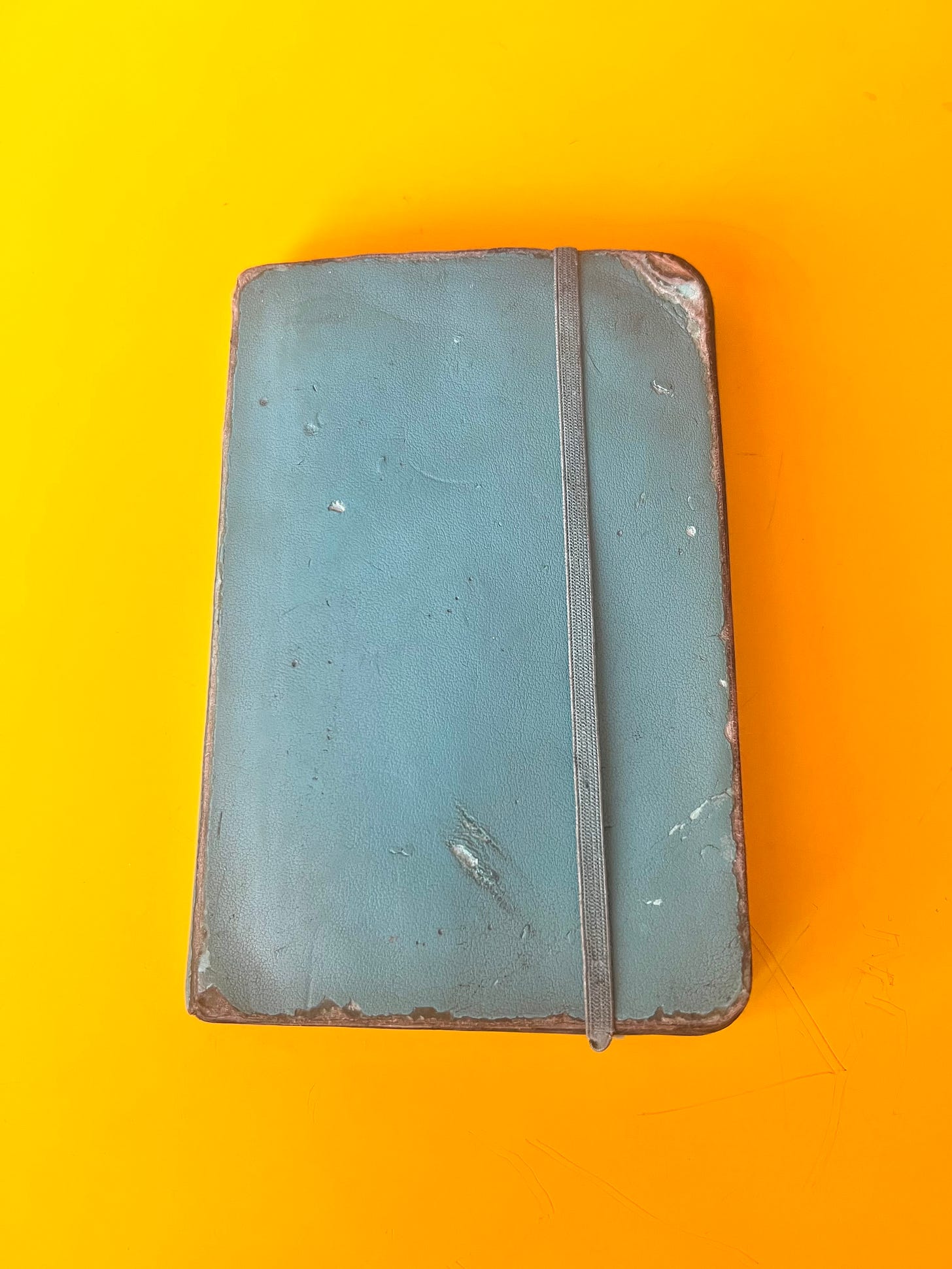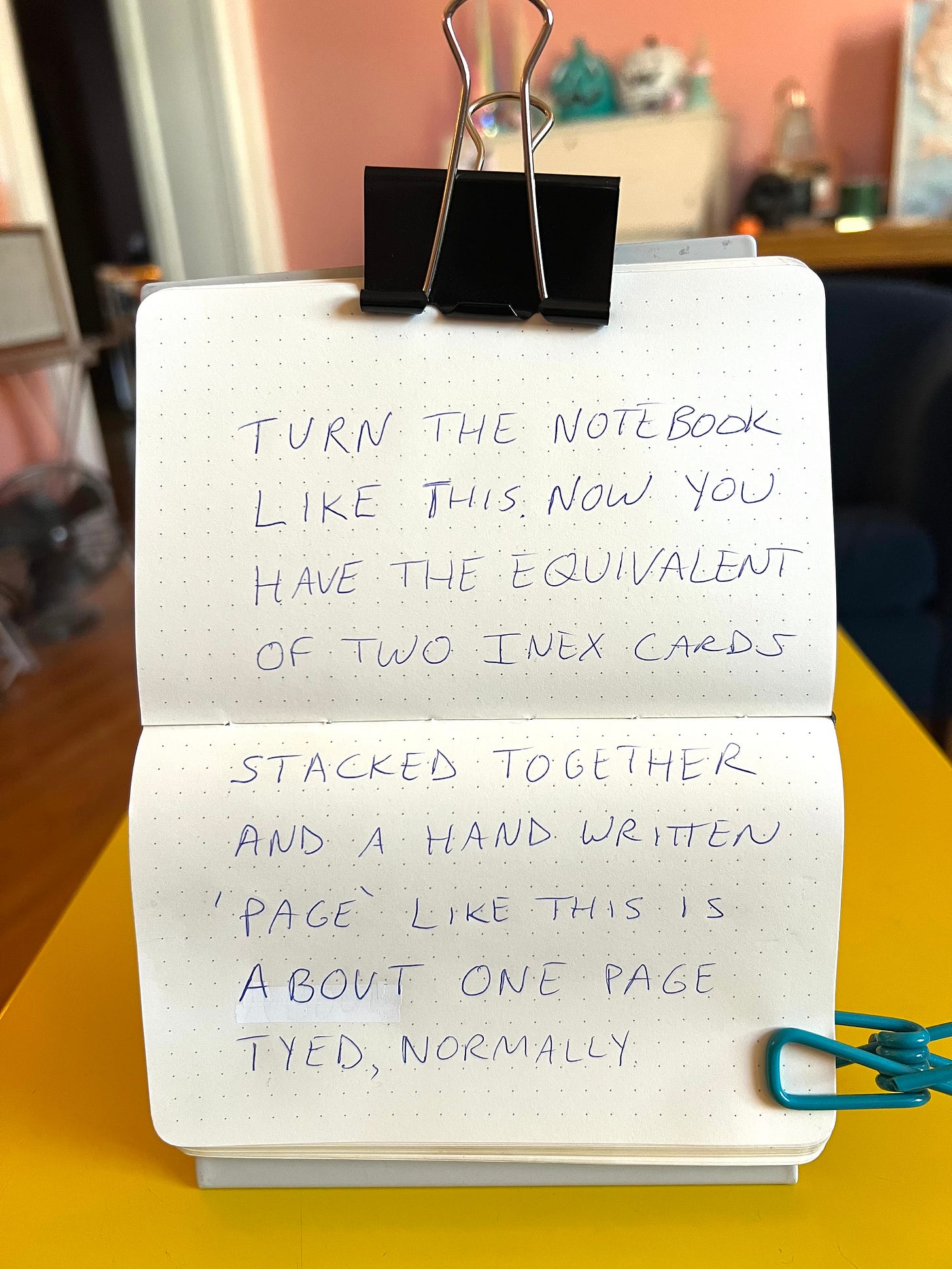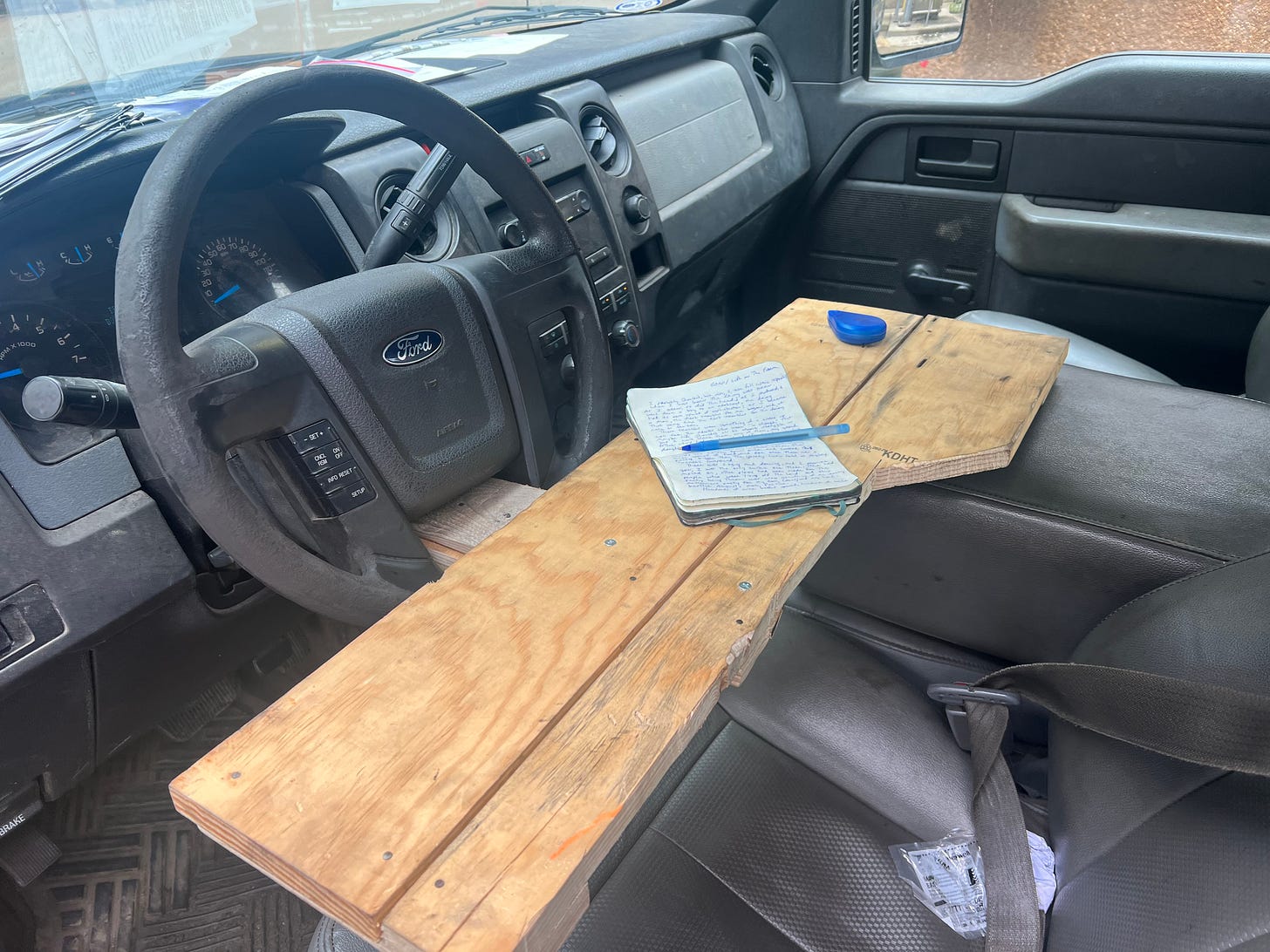As a kid I was never good at writing fiction by hand. About twenty years ago I started trying to write novels, and did most of my work on a computer. Later, when smart phones came out, I was working heavy construction in the union, and wrote on my cellphone during my breaks, just pecking away with my thumbs. I’d often just ‘text message’ myself a few hundred words of a scene I was working on during a coffee break/lunch break, etc.
Doing that every day, poems, and short stories, and novel chapters really piled up and I stayed in the groove of what I was making. Plus when you peck away on a cellphone, the act of writing doesn’t seem as serious; whenever I can make art in that mode, I accidentally do my best work.
So what am I saying in this post? Well, you can write your novel on a computer, or you can write your novel on your cellphone in little chunks (and I recommend a blend of both—line editing, of course, on the computer), but over the last year I’ve been working in a new way, for me. I’ve been writing my new novel by hand. Part of this was just trying to get away from computers and cellphones. Initially I bought a typewriter and used that when I was home from work to do part of my work away from digital. Of course I can’t bring a typewriter to whatever chemical plant, refinery, power station, I am fixing at my day job. So naturally, I switched to partially writing by hand on my breaks. Writing by hand slows me down, puts me into a deeper flow state; and now that I am older and have the discipline, I do take the time to retype what I’ve written this way.
When did I become Mr. Notebook?
Well, it all started in the summer of 2023, when I needed a notebook to keep track of what was going on at my day job. We had a big fabrication job up on a tower inside the acid plant. We had to build catwalks to go around the tower (to access valves and man ways), a hundred and fifty feet up in the air. We had to lay out and weld clips to the tower; fly the catwalk up with a crane, and then bolt em up; install ladders; install grating. It was a lot of work and the layout had to be precise. There were a lot of things to keep track of. So I went to the store and looked for a pocket-sized notebook for the job. The only criteria was, the notebook had to fit into the front pocket of my work shirt, and it had to be rugged enough to hold up to being outside in the rain, sleet, snow, wind, blah blah, all of that. The one I bought looked like this:
In the past I’ve never been one to write my ‘fiction’ in a notebook. It doesn’t seem to work as well for me than doing my writing other ways. But now I had this notebook in my pocket all day long at work. The notebook was always in my pocket. I was trying to avoid looking at my cellphone anyways. I’d installed a blocker on my phone (that I paid a monthly fee on! to turn the phone into the exact ‘brick’ I wanted it to be—though still having maps/navigation, email, text, and music). Life was good! But still, I was avoiding looking at my phone AMAP, so I started jotting down things in the notebook I had to carry anyway for work. And you know what? Through a few weeks practice, writing by hand and writing by ‘typing’ seemed the same to me. I just had to get used to it.
And by the way, the notebook is this one:
Dotted Rule, 5.5 x 3.5 Sheets
Dotted is important, rather than lined, or (for me) graph paper.
And the reason is this:
A lined notebook is laid out so it only works in one orientation, and you are forced to write to whatever width the pages are. You can write across the spine of a small pocket-sized lined notebook but that is not only irritating to do but more difficult to have to see to retype later. The solution is to buy a dotted notebook that can be flipped depending on the orientation needed.
A dotted notebook becomes a double-use notebook.
Want a place to jot directions and recipes and a grocery list? Flip it one way.
Want to write a twelve page short story? Flip it the other way.
When I am at my day job, I need to jot smaller notes, so I keep the notebook with the spine separating vertically, when I am doing my creative writing, that same notebook can be flipped horizontally.
Of course, they sell bigger and cheaper notebooks—even plain ol Mead composition notebooks—where the side by side pages would be the same as what I am showing you here. But the larger notebooks are a pain in the ass for me to carry around. I like that these pocket-size dotted ones fit into the top pocket of my work shirt and I have them on me ALL DAY long, whatever use I need them for.
At work, I still do some work with my cellphone. I built a small desk for my pickup truck, and with a clipboard holding the pocket-sized notebook, I can now retype that work into my cellphone.
It all looks something like this:
^ Now, this is all still a ‘first draft’ to me, and it will get reworked and will slowly morph over time into what I really want to say; but I find in the beginning, I just have to get it out by whatever means necessary. Sometimes that means I have to build a desk for my work truck and do it this way; other times I can just sit down at the typewriter and knock out an afternoon’s happy work (and might find that doesn’t need much editing at all); other times I might make something at my laptop—whatever is handy at the time. All this is to say, now that I have built this desk inside my work pickup truck … I have been bringing my laptop to the construction site and doing work there I never thought I would be able to do in the past. I always used to be jealous of people with cubicles (not really) but now I have my own.
(Here was the initial prototype for my TruckDesk®. It’s since been rebuilt and sealed with polyurethane)
Some last thoughts when writing by hand.
There are a few things I’d recommend.
A clip on book light. This one I’ve bought before. Maybe you read in bed at night, by book light? I find that to be so damn wonderful. Lights out in the room and just the little book light illuminating the exact page you’re reading. Well, have you ever tried to write in bed, in the dark, except for your little clip on book light? It’s just as wonderful. Put your knees up and rest the little dotted pocket-size notebook on a pillow and make something beautiful and strange each night before bed, or set an alarm and write in bed first thing in the morning, before the sun is up.
Correction Tape to keep each page clean of typos or scratch outs. I like this specific correction tape too because it works the best for my typewriter—you don’t have to advance the paper up too high to correct an error because this correction tape has a narrow neck. But any other correction tape works fine when writing by hand.
A bulk order of cheap blue bic pens. I ordered a crate of them (ha!), 300 for $27, and never have to look too far to find a pen. Plus, you don’t want to buy a pen with ink that smears (like a Pilot G2 pen), or that makes your handwriting harder for you to read when you have to inevitably retype all of this. And by the way, the retyping IS the best part. If you have never retyped a short story, and have only ever worked on a laptop, I recommend you play around with not only retyping but getting used to improvising and having fun while you retype a piece of writing.
And also, if you liked this post, covering some of the ‘mechanical’ things associated with writing, I recently put up a post about how I reverse outline novels on index cards and how that has helped me and other’s writers I have edited in the past, and continues to help me today. That post is here.
Thank you for reading
<3
Bud






Thanks for this. I always wanted a rough guide to how many handwritten pages are equal to one typed page...and bonus for knowing for a pocket notebook! No excuse to not finish a project!
Mmmm.... Binder clips. Note to self: buy more binder clips...